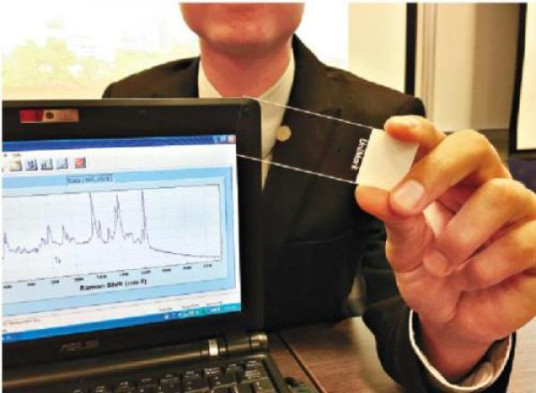New nanochips can detect hazardous substances in food in 30 seconds
 |
|
A researcher shows a nanochip. [Photo/chinanews.com] |
The Chinese University of Hong Kong has developed a nanochip that can detect hazardous substances in food in 30 seconds with Raman spectroscopy, chinanews.com reported citing Chinese-language newspaper Ta Kung Pao.
The new nanochip is half as expensive as the old chip. Moreover, the nanochip can be installed in an equipment as small as a cell phone, which makes it possible for people to carry it around. The nanochip is expected to come into market within one year.
The nanochip is made of high-quality gold or silver nanoparticles, said Ye Xingquan, a doctoral student in physics department of the Chinese University of Hong Kong. The chip is created after the gold and silver nanoparticles are spread on a piece of glass, which only takes six hours. The chip can be mass produced.
The nanochip can effectively enhance the Raman signal of the detected objects, with an accuracy rate of 90 percent, said Ye. There are no more than five labs in the world that have the ability to produce such chips.
The new technique can be used outside dust-free environment and the nanochip can be produced in ordinary labs, said Wang Jianfang, assistant dean of Faculty of Science of the university. By controlling the size and appearance of the nanoparticle, researchers can enhance the interaction between nanoparticle and light to increase the chip's efficiency.
The new chip can not only test hazardous substances in foods, but also test pesticides and food additives, said Wang. The test scope can be expanded to other fields, such as cocaine, heroin and even explosives.
